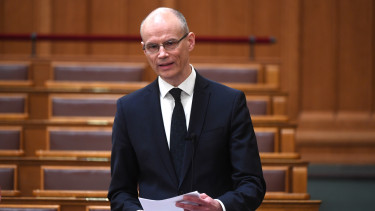Season of respiratory infections officially starts in Hungary
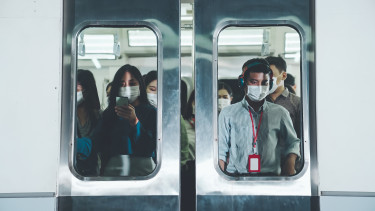
During the 2025/2026 season, the respiratory surveillance service will monitor the incidence of influenza-like illnesses and acute respiratory infections based on data on illnesses among residents registered with 1,288 general practitioners and paediatricians.
This is the smallest number of doctors to participate in the surveillance to date.
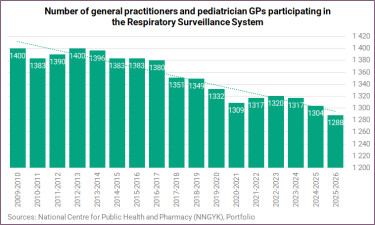
Based on reports from doctors participating in the surveillance service, it is estimated that, on the 40th week (between 29 September and 5 October 2025), 24,600 people in the country visited a doctor with flu-like symptoms, while 203,800 people visited a doctor with symptoms of an acute respiratory infection.
The former figure is the highest of the past four seasons, while the ARI figure was higher in the previous season and also in 2022/23.
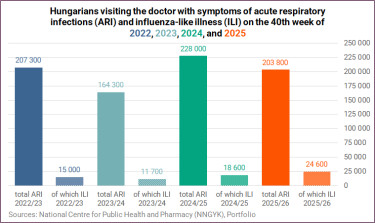
The share of ILI in ARI came in at 12.1%, the highest figure for the 40th week in the past four seasons.
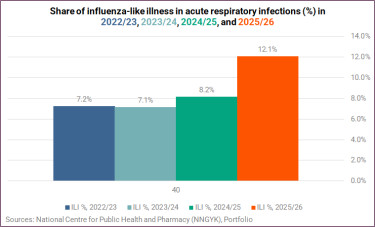
With regard to the number of ARI patients per 100,000 inhabitants, we're slightly better off than in 2024/25 and 2022/23 but a lot worse than in 2023/24.
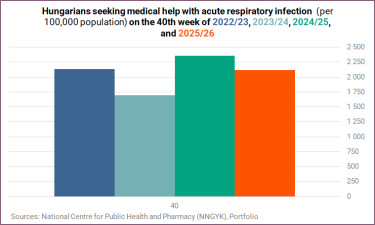
However, the number of patients with ILI per 100,000 people greatly exceeds the comparative figures of the previous three seasons.
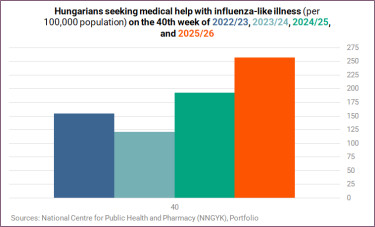
The Covid-19 positivity rate came in at 19.4% when considering all positive tests (20) of the samples submitted by sentinel GPs (103) and at 18.7% when calculating with all positive tests (23) in all of the samples (i.e. those submitted by sentinel hospitals and also traditional diagnostic samples, 123 in total).
The coronavirus positivity rate was much higher in 2024/25 (34.4%) and in 2023/24 (35%).
Read our articles about the importance of vaccination below:
There were 94 people in hospital with SARI, of whom one tested positive for infuenza (1.1%) and 33 for COVID-19 (35.1%). The latter figure compares with 61.7% in 2024/25 and 66.9% in 2023/24, when hospitals admitted a lot more SARI patients on the 40th week, 188 and 154, respectively,
Ten of the 94 patients needed intensive of subintensive care, a ratio of 10.6%, which compares with 24 and 12.8% a year ago and 17 and 11% two years ago.
Around 70% of people admitted to hospital with a coronavirus infection (23 in total) were over 60 years old, and nearly 44% of SARI patients were in this age group (41 in total). Almost 29% of SARI patients were under two years old (27 in total).
The NNGYK also had some key data published since the official end of the previous respiratory season on the 20th week, which show a general increase in the number of hospitalsed SARI patients since the 35th week. We also find that SARS-CoV-2 is the main reason behind hospitalisations.
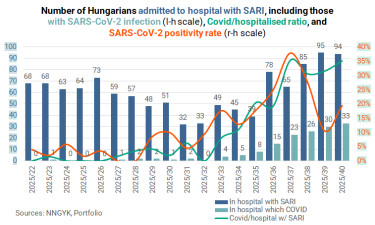
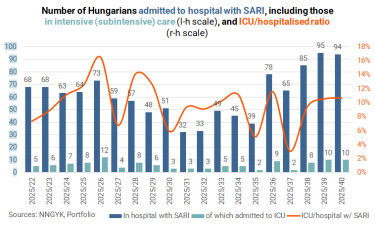
The patterns of the previous years suggest that the ratio of coronavirus infections in hospitalisations should start dropping just about now and get close to 0-10% by the 5th or 6th week of next year. In parallel with this, influenza infections behind hospitalisations should start to pick up before the end of the year or early 2026. And then there's the respiratory syncytial virus (RSV) to consider.
This is how the pathogens 'swapped places' as the main reason behind hospitalisations last year.
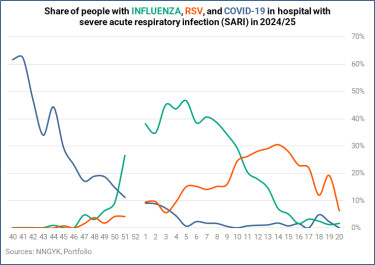
And this is how they changed over the past three respiratory seasons. (Note that
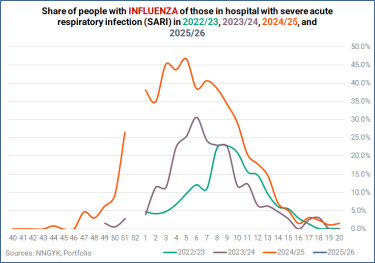
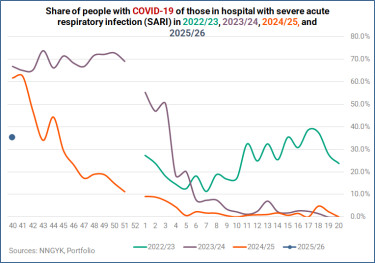
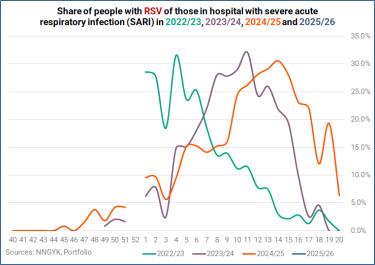
Cover image (for illustration purposes only): Getty Images
